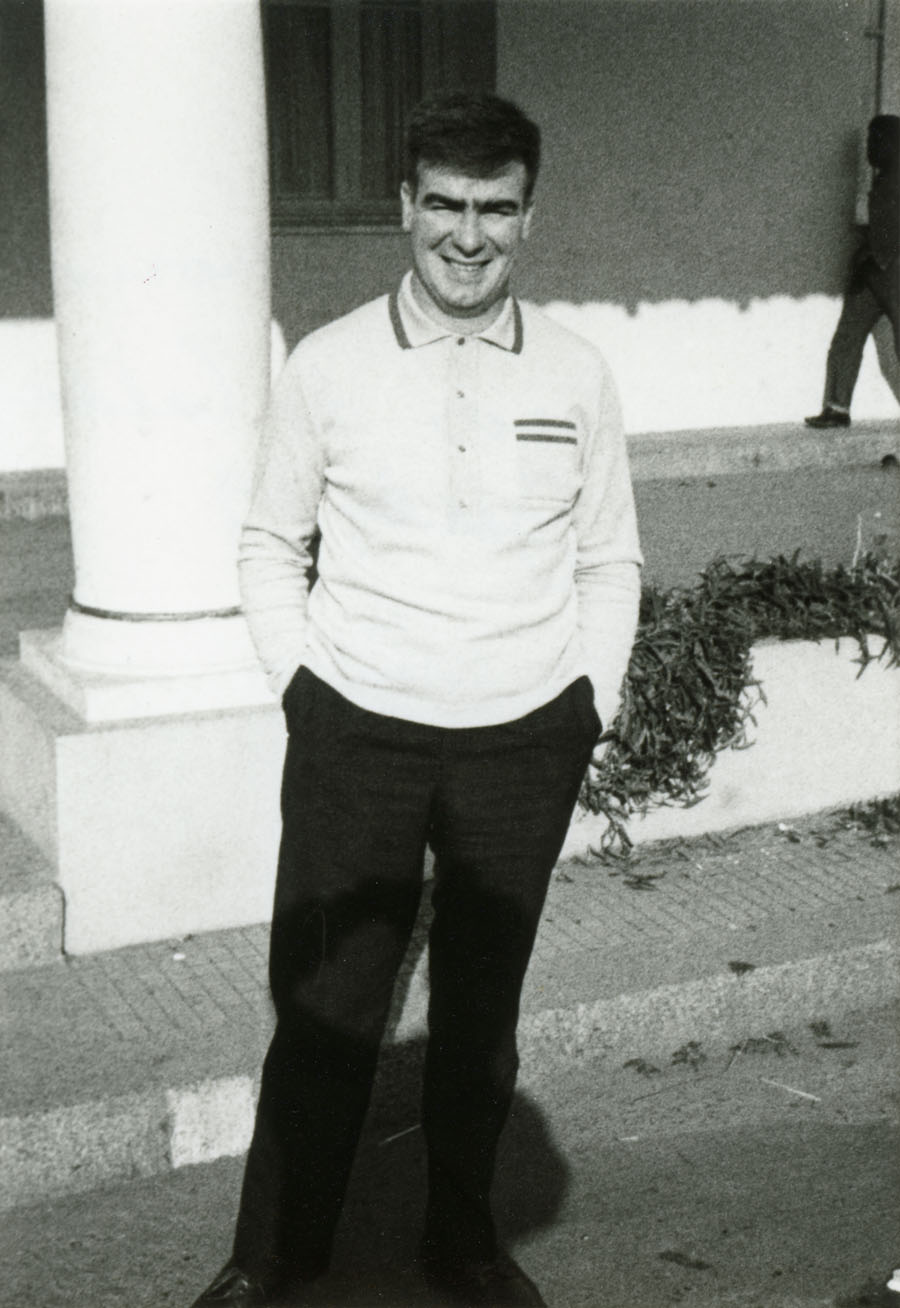Who's That Mathematician? Images from the Paul R. Halmos Photograph Collection
For more information about Paul R. Halmos (1916-2006) and about the Paul R. Halmos Photograph Collection, please see the introduction to this article on page 1. A new page featuring six photographs will be posted at the start of each week during 2012.
Paul Halmos photographed, from left to right, Richard Courant (1888-1972), Peter Lax (b. 1926), and Michael Atiyah (b. 1929) poolside at the Halmos home in Honolulu, Hawaii, on March 29, 1969. Halmos was a faculty member at the University of Hawaii during the 1968-69 academic year and invited many mathematical friends to visit. For a photo of Halmos' Ph.D. advisor, Joseph Doob, in Hawaii, see page 2 of this collection.
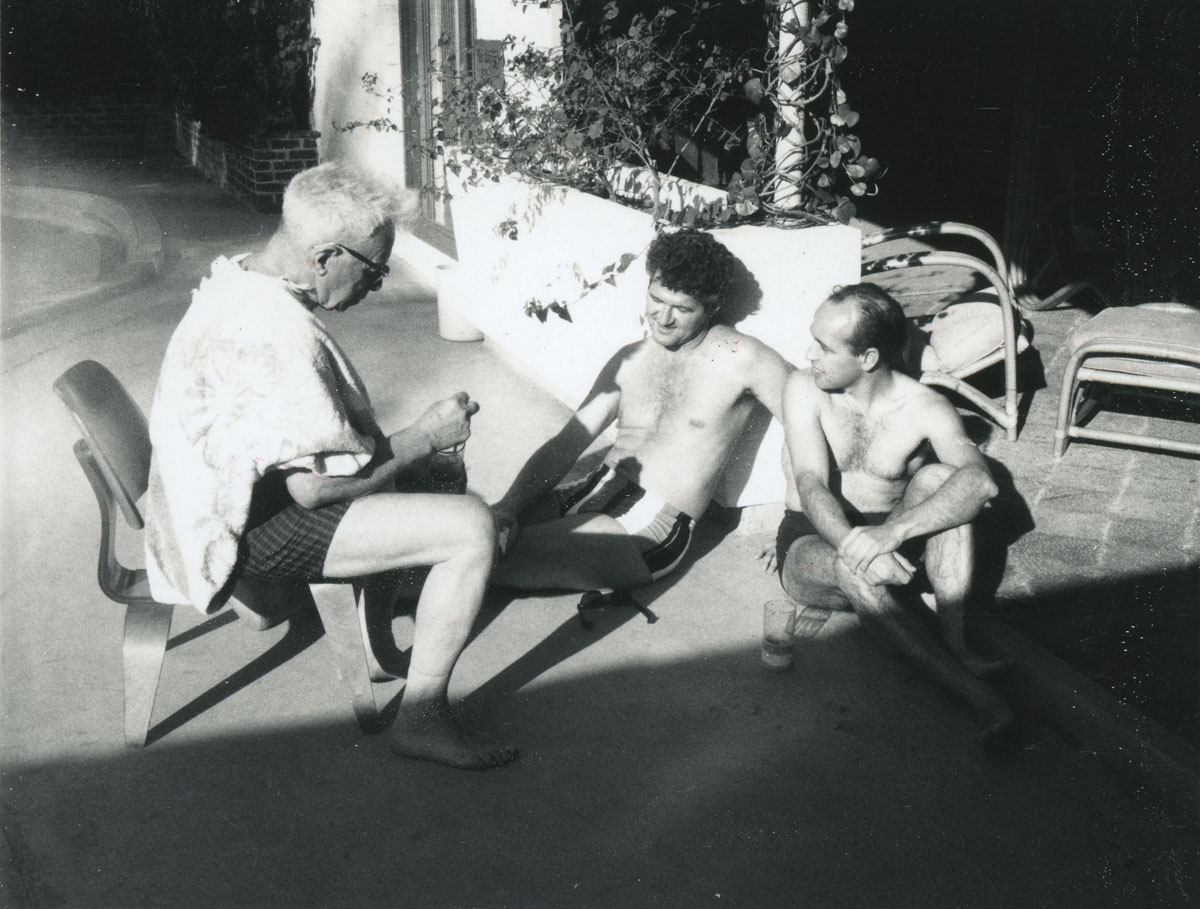
Richard Courant is best known as founder of the Courant Institute of Mathematical Sciences at New York University, whose faculty he began building in 1936. Courant already had established one Mathematical Institute, at Göttingen University in Germany, but the Nazis effectively dismantled its faculty when they came to power in 1933. An applied mathematician whose work was primarily in mathematical physics, Courant developed what is now known as the "finite element method." Both the finite element method and the Courant Institute acquired their present names during the 1960s. (Source: MacTutor Archive)
Peter Lax has spent most of his career at the Courant Institute at New York University, earning his Ph.D. there in 1949, becoming an instructor there in 1951, and directing the Institute during the 1970s. He is an applied mathematician with wide-ranging interests, mostly centered around differential equations and numerical methods for solving them. He may be best known for developing scattering theory with Ralph S. Phillips; see page 9 of this collection for a photo of Phillips (MacTutor Archive). He was president of the AMS in 1979-80 (AMS Presidents).
Sir Michael Atiyah, who was knighted in 1983, won the Fields Medal in 1966 and published his book K-theory, which included discussion of the Atiyah-Singer Index Theorem, in 1967 (MacTutor Archive). His Fields Medal was awarded for his work on K-theory; for the Index Theorem; and for a proof with Raoul Bott (see below) of a fixed point theorem related to the 'Lefschetz formula' (International Mathematical Union). Two more photographs of Atiyah can be found on page 2 of this collection.
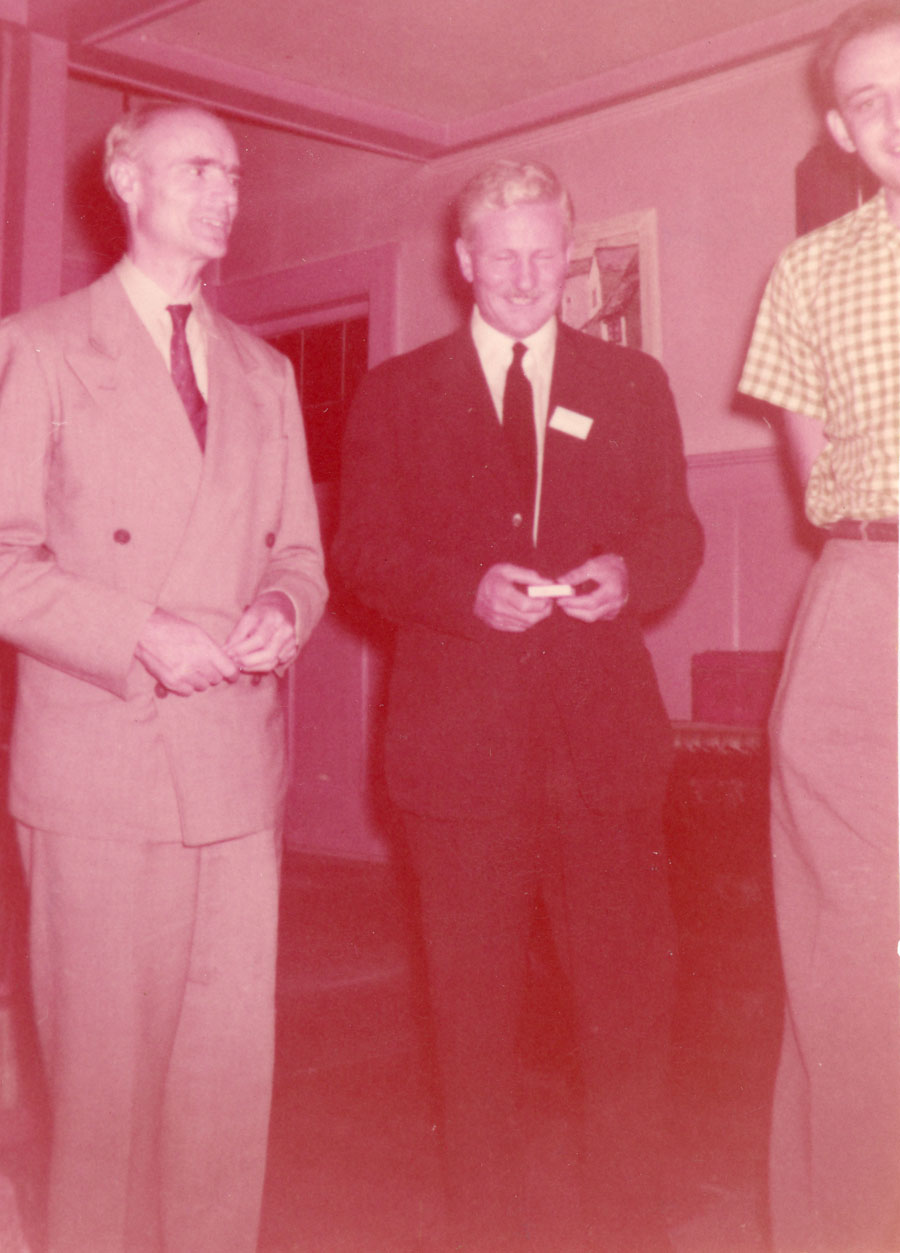
Halmos photographed, from left to right, H. S. M. (Donald) Coxeter (1907-2003), Gilbert Robinson (1906-1992), and Raoul Bott (1923-2005) in 1955. For two more photographs of Bott, see page 8 of this collection.
H. S. M. (Donald) Coxeter was president of the Canadian Mathematical Society (CMS Presidents) from 1965 to 1967 and, with G. de B. Robinson, founded the Canadian Journal of Mathematics (CMS: Robinson). A well-known geometer most famous for introducing Coxeter groups, he spent his career at the University of Toronto (CMS: Coxeter). O'Connor and Robertson see beauty and symmetry as Coxeter's primary mathematical concerns, citing also his friendships with artist Maurits Escher and architect Buckminster Fuller (MacTutor Archive).
Gilbert de Beauregard Robinson was president of the Canadian Mathematical Society (CMS Presidents) from 1953 to 1957 and, with H. S. M. Coxeter, founded the Canadian Journal of Mathematics. A symmetric group theorist (CMS) who earned his Ph.D. from Cambridge in 1931, he spent most of his career at the University of Toronto (Mathematics Genealogy Project).
Raoul Bott was an engineer-turned-mathematician who produced many important results in topology and differential geometry throughout his career and whose Ph.D. students included two Fields medalists. In fact, his first Ph.D. student was future Fields Medalist Stephen Smale, who earned his degree from the University of Michigan in 1957. Bott spent most of his career at Harvard, where one of his early Ph.D. students (1964) was future Fields Medalist Daniel Quillen. Bott’s own Ph.D. was from Carnegie-Mellon University, earned in 1949 for his dissertation on “Electrical Network Theory,” reflecting his interest up to that time in electrical engineering. (Sources: MacTutor Archive, Mathematics Genealogy Project)
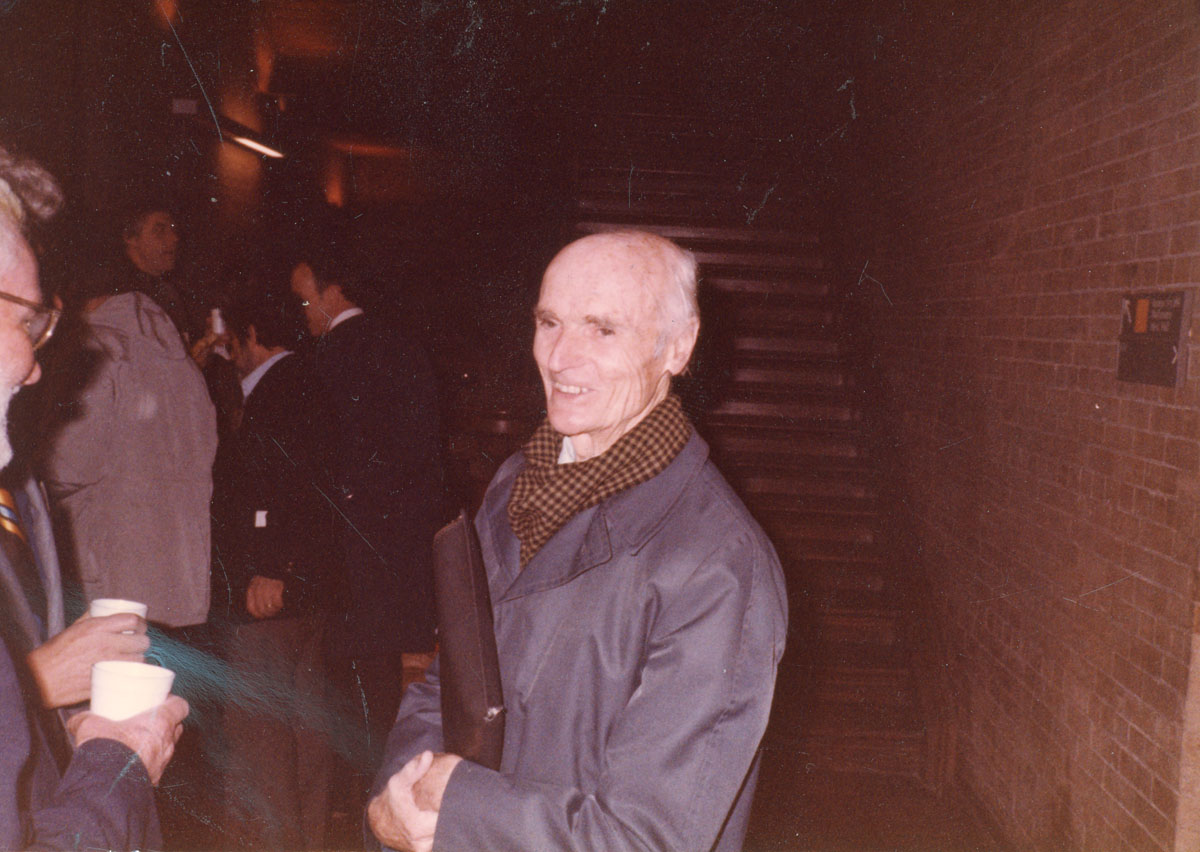
Donald Coxeter was photographed again in November of 1983 at a mathematics meeting in Toronto, Ontario, Canada. He was professor of mathematics at the University of Toronto from 1936 onward. (See "H. S. M. Coxeter (1907-2003)," AMS Notices 50:10, November 2003.)
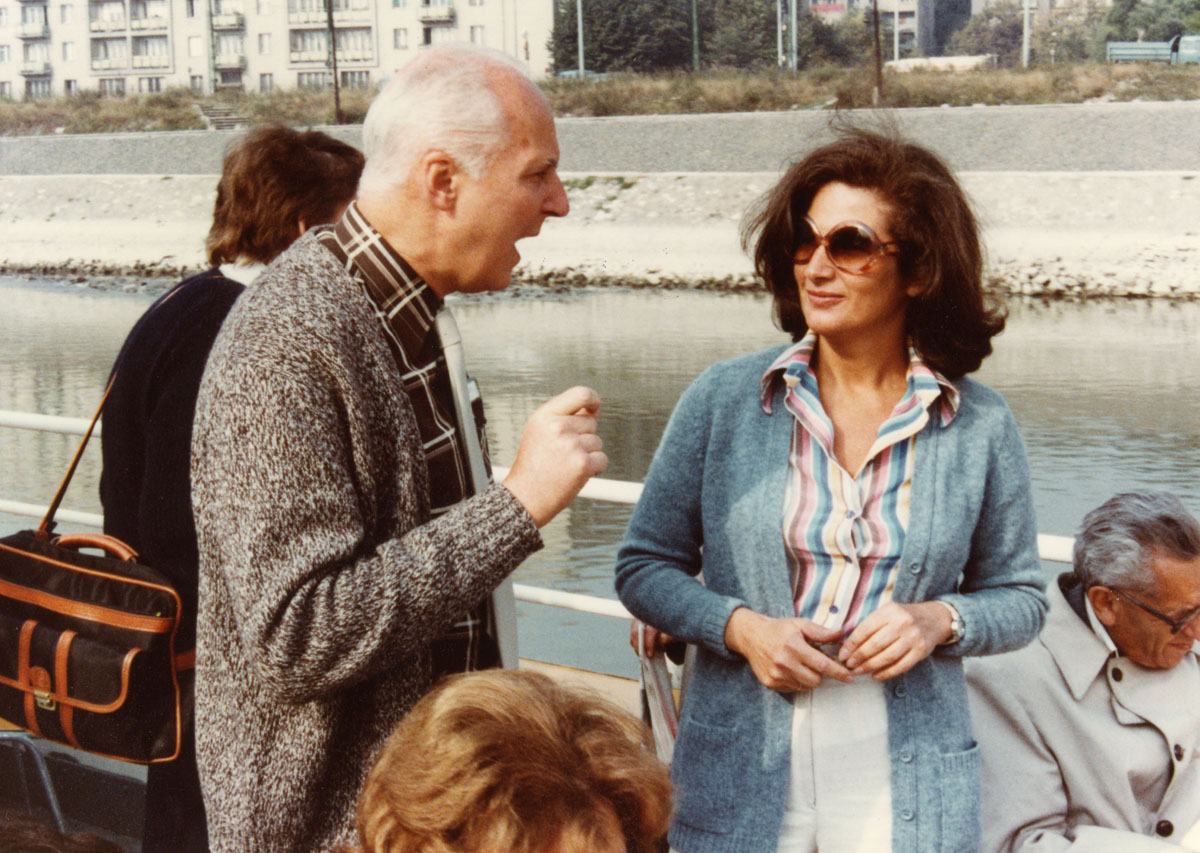
Halmos photographed Ákos Császár (b. 1924) and Vera Sós (b. 1930) in Visegrád, Hungary, in August of 1980. Both Császár and Sós have spent most of their careers at Eötvös Loránd University in Budapest, Hungary, and both have been associated with the Hungarian Academy of Sciences in Budapest as well (Mathematics Genealogy Project). Császár may be most famous for his discovery of the Császár polyhedron (Science News). Sos is a graph theorist who currently is a researcher in the combinatorics and discrete mathematics group at the Alfréd Rényi Institute of Mathematics, Hungarian Academy of Sciences (Rényi Institute Researchers). And, yes, that sure looks like Paul Erdös sitting to the right of Sós!
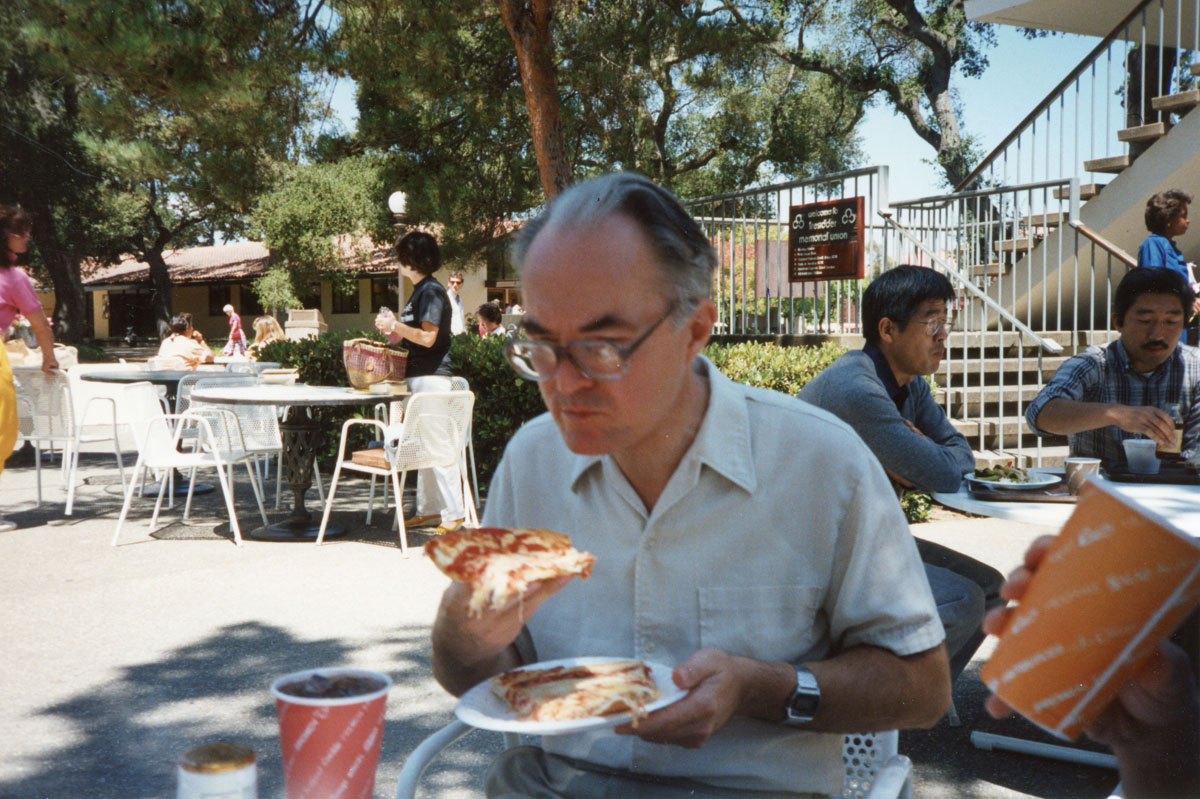
Halmos photographed Imre Csiszár (b. 1938) in about 1987. Csiszár earned his Ph.D. in 1968 from the Hungarian Academy of Sciences with a dissertation on information theory written under the famous Hungarian mathematician Alfréd Rényi (Mathematics Genealogy Project). Since 1968, he has been head of the information theory research group at what is now the Alfréd Rényi Institute of Mathematics, Hungarian Academy of Sciences, Budapest. He also is a professor at Eötvös University and the Technical University in Budapest. His c.v. indicates that he was a visiting professor at Stanford University in Palo Alto, California, at some point during his career, and we wonder if this photograph was taken during his time there (Rényi Institute Researchers, Rényi Institute Csiszár homepage).
Ubiratan "Ubi" D'Ambrosio (b. 1932) was photographed by Halmos at the Seventh Brazilian Mathematics Colloquium in Poços de Caldas, Brazil, on July 1, 1969. One of the founders and leaders of the cultural and mathematical area of study known as ethnomathematics, D'Ambrosio earned his Ph.D. in functional analysis at the University of São Paulo, Brazil, in 1963, and now is professor emeritus of mathematics at the State University of Campinas (UNICAMP) in São Paulo, Brazil (Nexus Network Journal biography, Mathematics Genealogy Project).
For an introduction to this article and to the Paul R. Halmos Photograph Collection, please see page 1. Watch for a new page featuring six new photographs each week during 2012.
Regarding sources for this page: Information for which a source is not given either appeared on the reverse side of the photograph or was obtained from various sources during 2011-12 by archivist Carol Mead of the Archives for American Mathematics, Dolph Briscoe Center for American History, University of Texas, Austin.
